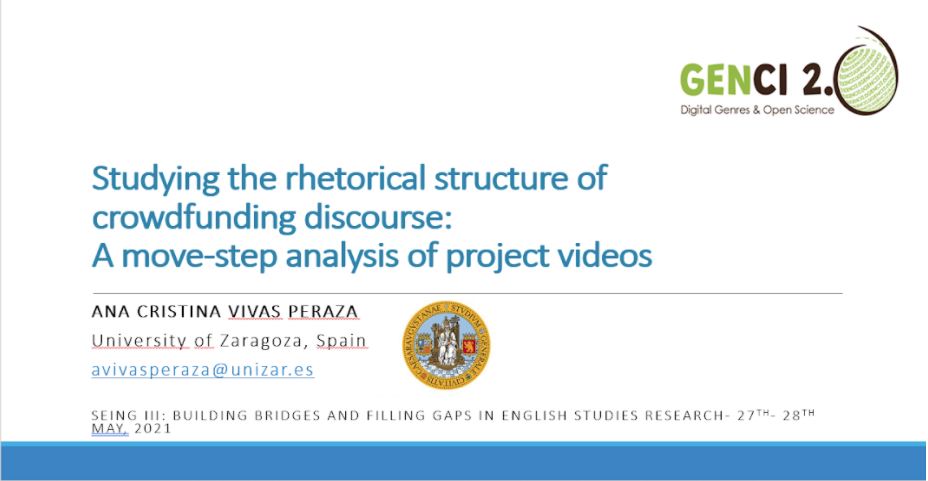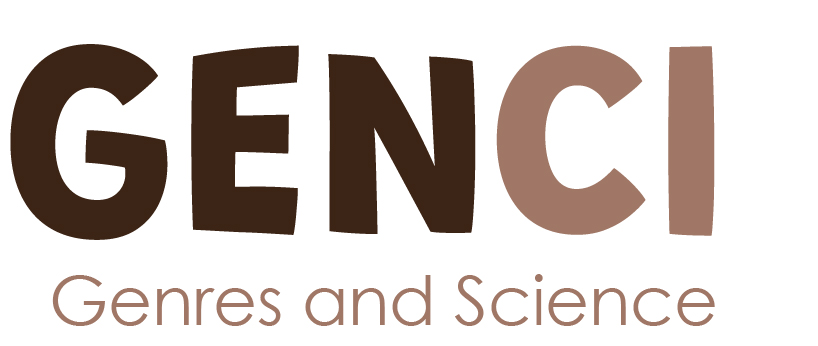Studying the rhetorical structure of crowdfunding discourse: A move-step analysis of project videos. Vivas Peraza, Ana Cristina

Abstract
Crowdfunding (CF) is a strategy for scientists and entrepreneurs of any kind to collect funds for their projects by requesting online donations to the public. As an alternative to the highly competitive traditional institutional funding, this revolutionary practice offers scientists and graduate students the chance to promote their projects to a broad audience and raise the necessary capital to conduct their research and advanced studies (Luzón & Llantada, forthcoming). As a result, a number of online CF platforms have emerged during the last decade, where a variety of worth-observing new multimodal texts are surfacing to inform about cutting-edge science projects. From the perspectives of genre analysis and socio-rhetorical studies, CF discourse has inevitably attracted the attention of some scholars in the last few years. Contributions have been made about the rhetorical organisations of web-based crowdfunding descriptions (Mehlenbacher, 2019) and the linguistic choices in these text narratives (Paulus & Roberts, 2018). Nonetheless, little attention has been paid to one of the most significant elements of these platforms: the video pitch. I seek to remedy some of this problem in this paper, which is based on a sample of 50 CF videos promoting projects on Biology, Ecology and Medicine, created between 2017 and 2020, and collected from the online platform Experiment.com. By adopting the Swalesian move-step analysis genre approach (Swales, 1990, 2004), the rhetorical macrostructure of videos was studied, and a set of moves was identified in order to describe the functional elements that together aim to convey the overall purpose of the genre: persuading potential donors to support the project. Pedagogically, the results aim to inform future crowdfunders about the functional moves in video projects. Theoretically, it is expected that this study will contribute to digital genre research and English for Specific Purposes (ESP) literature.
A phraseological analysis for Art and Design projects for Crowdfunding Science. Vela Rodrigo, A.
Abstract
In a scientific context of growing interdependence at a global level, crowdfunding platforms stand out for their practical, dynamic and participatory nature, offering researchers the opportunity to share and disseminate their work, while interacting with a non-specialized public. The aim of this paper is to analyse a small-scale corpus of Art and Design projects of Experiment.com. and critically assess the rationale for the recurring phraseological patterns in these projects. To fulfil this aim, I will draw on rhetorical and EAP genre studies (Bazerman, 1994, 2016; Miller, 1984, Swales, 1990, 2004) as well as on studies of genre, register and style (Biber and Conrad, 2019, Biber and Gray, 2012). Using corpus linguistics techniques in this presentation I will examine the structural forms and discourse functions of recurring phraseological patterns. More broadly, I will finally assess the degree of language standardization in this particular genre.
